
Thirkleby Hall was a large 18th-century country house in Great Thirkleby in the Hambleton Hills of North Yorkshire. It was demolished in 1927.

Thirkleby Hall was a large 18th-century country house in Great Thirkleby in the Hambleton Hills of North Yorkshire. It was demolished in 1927.
The manor of Thirkleby was acquired in 1576 by William Frankland, a wealthy London merchant. It passed down in the Frankland family to William Frankland, who was made a baronet in 1660. It afterwards descended through the Frankland Baronets to Sir Thomas Frankland, 5th Baronet in 1783 (after the death of the 4th Baronet's second wife), who was an Admiral of the White in the Royal Navy and MP for Thirsk, but who died the following year. [1]
His son Sir Thomas Frankland, 6th Baronet commissioned James Wyatt to build a new house, stables and triumphal arch in classical style; it was completed in 1790. [2] The 6th Baronet's son, Sir Robert Frankland-Russell, 7th Baronet, had no son and following his death in 1849, the estate passed to his cousin's third daughter who had married Sir William Payne-Gallwey, 2nd Baronet two years earlier. [3] (The baronetcy passed to his cousin Frederick William Frankland.) In 1881 the estate passed to Sir William's son, Sir Ralph Payne-Gallwey. [3] When Ralph's son was killed in the First World War Sir Ralph decided to sell the estate by auction. [3]
The house failed to sell and was demolished in 1927. [3] The entry arch/gatehouse still stands and is in use. The stables building is also still present. A holiday caravan park has been built to the east of it. [4]

Baron Zouche is a title which has been created three times, all in the Peerage of England.

Thomas Philip de Grey, 2nd Earl de Grey, 3rd Baron Grantham, 6th Baron Lucas, KG, PC, FRS, styled as The Hon. Thomas Robinson until 1786 and as Lord Grantham from 1786 to 1833, of Wrest Park in the parish of Silsoe, Bedfordshire, was a British Tory statesman. He changed his surname to Weddell in 1803 and to de Grey in 1833.

Rufford Abbey is a country estate in Rufford, Nottinghamshire, England, two miles (4 km) south of Ollerton. Originally a Cistercian abbey, it was converted to a country house in the 16th century after King Henry VIII’s dissolution of the monasteries. Part of the house was demolished in the 20th century, but the remains, standing in 150 acres of park and woodland, are open to the public as Rufford Country Park. Part of the park is a local nature reserve.
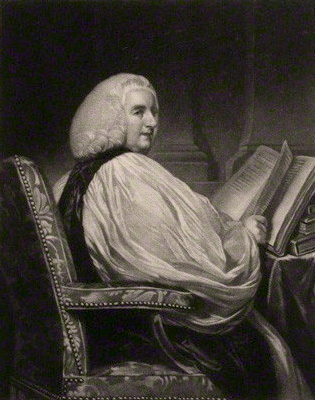
Baron Rokeby, of Armagh in the County of Armagh, was a title in the Peerage of Ireland. It was created in 1777 for The Most Rev. Dr Richard Robinson, Church of Ireland Lord Primate of All Ireland and Lord Archbishop of Armagh, with remainder to his brothers and his father's second cousin Matthew Robinson and the heirs male of their bodies. In 1785 he also succeeded his elder brother as 3rd Baronet according to a special remainder. Lord Rokeby never married and was succeeded in the barony and baronetcy according to the special remainders in the letters patent by his third cousin Matthew Robinson-Morris, the second Baron and fourth Baronet. He was the son of Matthew Robinson, son of Thomas Robinson, son of Sir Leonard Robinson, brother of William Robinson, great-grandfather of the first Robinson Baronet and the first Baron Rokeby. The second Baron was an academic, politician and eccentric. Born Matthew Robinson, he assumed by Royal licence the additional surname of Morris in 1746 on succeeding to the Mount Morris Estate in Monks Horton, Kent through his mother. He never married and was succeeded by his nephew Morris Robinson, the third Baron. He was the elder son of Morris Robinson.

The Frankland Baronetcy, of Thirkelby in the County of York, is a title in the Baronetage of England, created on 24 December 1660 for William Frankland. He later represented Thirsk in Parliament.
Sir William Frankland, 1st Baronet was an English landowner and politician who sat in the House of Commons from 1671 to 1685.
Sir Thomas Frankland, 3rd Baronet, of Thirkleby in Yorkshire, was an English Whig politician who sat in the English and British House of Commons for over 30 years between 1708 and 1741.
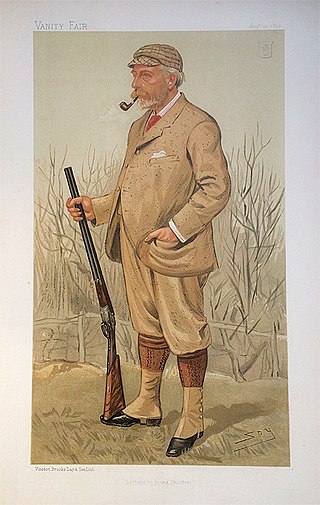
Sir Ralph William Frankland Payne-Gallwey, 3rd Baronet (1848–1916) was an English engineer, historian, ballistics expert, and artist.

The Payne, later Payne-Gallwey, and from 1967 Frankland-Payne-Gallwey Baronetcy, was a title in the Baronetage of the United Kingdom. It was created on 8 December 1812 for General William Payne, Governor of the Leeward Islands. Payne-Gallwey was the half-brother of Ralph Payne, 1st Baron Lavington, who also served as Governor of the Leeward Islands.
General Sir William Payne-Gallwey, 1st Baronet was a British soldier and Governor of the Leeward Islands. He was the youngest son of Ralph Payne by his second spouse Margaret née Gallwey, of St. Kitts, West Indies. He served as a Lieutenant-general in India, and was at one point second-in-command of the British Army in Spain. Thereafter he was appointed Governor of the Leeward Islands. General Payne was the half-brother of Ralph Payne, 1st Baron Lavington, who had also served as Governor of the Leeward Islands.

Ripley Castle is a Grade I listed 14th-century country house in Ripley, North Yorkshire, England, 3 miles (4.8 km) north of Harrogate.
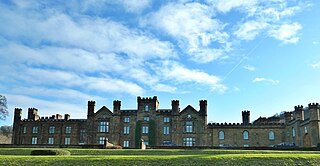
Wilton Castle is an early 19th-century mansion, built on the site of a medieval castle, now converted into residential apartments, situated at Wilton, in Redcar and Cleveland, North Yorkshire, England. It is a Grade II listed building.
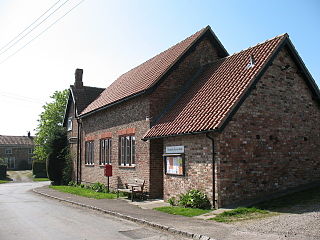
Thirkleby High and Low with Osgodby is a civil parish in North Yorkshire, England. The parish includes the villages of Great Thirkleby and Little Thirkleby and the scattered hamlet of Osgodby. The similarly named medieval settlement of Thirkleby Manor is around 30 miles north, in the parish of Kirby Grindalythe, Ryedale District. The population of the civil parish taken at the 2011 Census was 266.
The Payne Baronetcy, of St Christopher's in the West Indies, was a title in the Baronetage of Great Britain. It was created on 31 October 1737 for Charles Payne. According to some sources that title became extinct on the death of the second Baronet, Sir Gillis Payne, in 1801. Sir Gillis was in a relationship with a farmer's daughter, Maria Keeling. They apparently married in 1761 although several children had been born before this date. Peter Payne was the eldest son born after the marriage and would normally have succeeded in the title. However, he allowed his eldest brother John Payne to assume the title, although John was illegitimate. John died in 1803 when his son Charles assumed the title. However, in 1828 Peter Payne raised the question in the courts over who was the rightful baronet. The Court of Chancery declared that he was the rightful heir to his father, but this was overturned by the Lord Chancellor in 1829. Nonetheless, during his lifetime Sir Peter was universally acknowledged as a baronet. Most reference books on the British nobility and baronetage include the title, although they describe it as being in dispute between rival branches of the family. Charles Robert Salusbury Payne, the supposed sixth Baronet, appears to have discontinued the claim around 1900.
Sir William Payne-Gallwey, 2nd Baronet was an English Conservative Party politician who sat in the House of Commons from 1851 to 1880.
William Frankland was an English politician who sat in the House of Commons from 1628 to 1629 and in 1640.

Normanton Hall was a large, now demolished, country house at Normanton in Rutland.
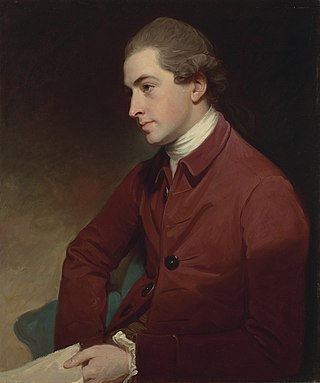
Sir Thomas Frankland, 6th Baronet was an English country landowner of Thirkleby, Yorkshire and politician who sat in the House of Commons in two sessions between 1774 and 1801. He was an eminent botanist from whom the genus Franklandia is named. Frankland was born in London, the eldest surviving son of Admiral Sir Thomas Frankland, 5th Baronet and his wife Sarah Rhett. He was educated at Eton College from 1761 to 1767 and matriculated at Merton College, Oxford in June 1768, becoming MA 4 on July 1771. In 1772 he entered Lincoln's Inn. He was an excellent naturalist being a botanist and florist, and was selected a Fellow of the Royal Society in 1773. He was also an authority on British sport. He married his cousin Dorothy Smelt, daughter of William Smelt of Bedale, Yorkshire on 7 March 1775.

Sir Robert Frankland-Russell, 7th Baronet (1784–1849) was an English politician, known also as an artist. In early life he was called Robert Frankland.
Gallwey may refer to: